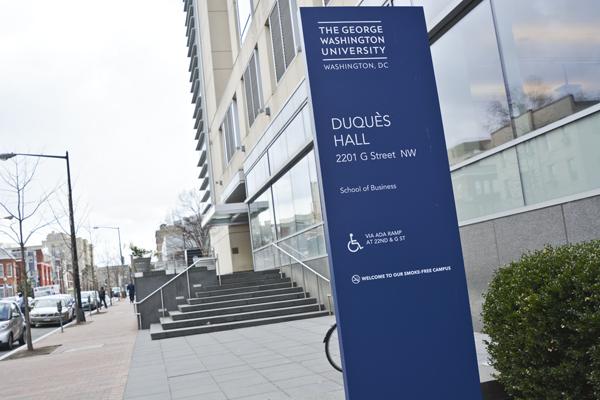The GW School of Business will start to use data mining software in a push to better connect with prospective students and build a base of potential donors.
California-based Marketo announced last week that it will help officials at the business school track students throughout their time at GW and look for enrollment patterns. Experts say the software, which is similar to programs in place at other schools, will also allow GW to predict which students are most likely to donate.
The move comes after a decline in graduate student credit hours and a bigger effort to fundraise during the University’s $1 billion capital campaign. More fundraising secured for the business school itself would help ease budget woes that have plagued the school for two years after former dean Doug Guthrie overspent by $13 million.
Dustin Carnevale, a spokesman for the business school, said in an email that the software will help the school “supplement and strengthen its outreach to prospective students.”
Carnevale declined to say how much the software cost, when the business school will begin using it or whether it will change the business school’s application. Marketo officials declined a request for comment.
“With a single view of all of our marketing activities, we can now identify which campaigns and channels capture prospective students’ attention and generate the most applications and enrollments,” Patsy Torres, the business school’s senior assistant director of graduate admissions, said in a release.
Northeastern University as well as the University of California Irvine and the University of the Redlands also use the software, according to Marketo’s website. None of GW’s peers have reported using Marketo software.
Steve Goodman, a college admissions consultant, said officials can use the program to track data like campus visits, standardized test scores or attendance at admissions events. That data can help them plan their overall strategy, Goodman said.
“Let’s assume the people who wait-listed but matriculated are the most entrepreneurial and in the long run give the most big donations. You might preserve more points of the pool for students who have the profile,” Goodman said.
Goodman said it’s difficult to know exactly how much the software would cost, but estimated it would be less than $100,000. He said officials will get their money’s worth if they “get that plus a dollar of donations,” which they would not have received before.
“It’s about getting the best applicants that they can get, treating them the best, so they have a good relationship with GW and donate down the road,” Goodman said. “The donations are always the icing on the cake.”
David Montesano, a college admissions strategist at the education consulting firm College Match, said the software can also help schools use social media more effectively to connect with students.
“Since Gen Xers and millennials will be the next donor base, it makes sense to approach them from a more savvy marketing perspective,” Montesano said.
Colleen Murphy contributed reporting.







